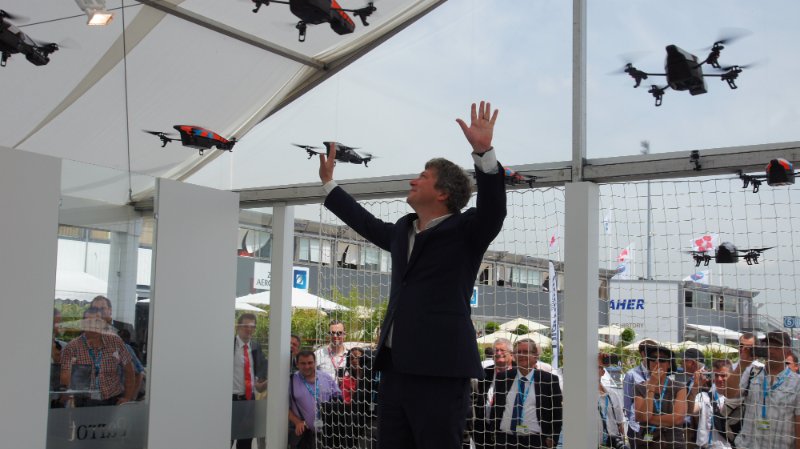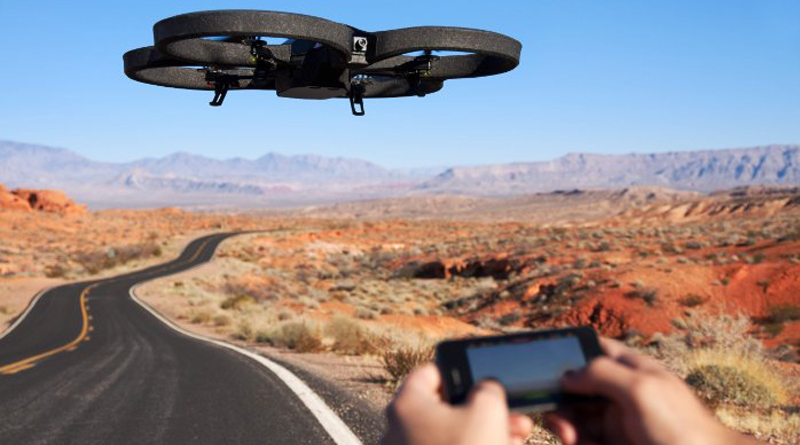In just a few decades, advanced knowledge has become a commodity. For innovative companies it is safer, cheaper and most importantly much faster to assemble external bricks (knowledge, technologies or talents) to put superior products on the market. Beyond the hype, Open Innovation is a reality. In this article we tell the story of how Parrot, French leader in handfree car kits became leader on the market of drones in just a few years.
This article is derived from one of the numerous case studies published in the book : Innovation Intelligence. The case studies are based on interviews, among others with Parrot CEO and Founder Henri Seydoux.
It must fly!
Our Wi-Fi remote-control car must fly! Henri Seydoux had his epiphany as he walked along the Canal Saint-Martin in Paris. The idea he had in that moment would become one of his most difficult, as well as most exciting challenges as an entrepreneur. Back in 2007, Parrot had already been working for three years on a Wi-Fi remote-control car project, in order to diversify Parrot’s business. The product was ready for production… but it was not fun enough. Henri was about to cancel the project when he got the idea to turn the car into a drone.

The challenges of the drone project were numerous and Henri knew that he would not be able to do everything by himself. Many of the required pieces of knowledge were not available in-house: aeronautics, mechanics, cameras, and control algorithms. What would be outsourced? Who could help? How would Parrot find the missing bits of knowledge? What value would Parrot add? To bring in the required knowledge and skills, every type of arrangement would be allowed: hiring, consulting, codevelopment, and so forth.
Henri had to hunt down an expert outside of the company. While Pascal Zunino was an engineering student at the Grenoble Institute of Technology (INPG), he had already been designing and building his own drones in his garage for five years. Winning the prestigious ONERA/DGA innovation contest prize gave Pascal a lot of press coverage, thanks to which Henri Seydoux found him. That was the beginning of a collaboration that would last for three years. The collaboration would save Parrot precious time—probably several years.
In early 2007 Parrot assembled the new team, the Commando team, that would be in charge of making the car fly. The young Pascal Zunino joined the Commando team as an external consultant. Pascal helped Parrot to develop various key aspects of Parrot’s drone: propeller design, control system and stabilization algorithms, ultrasound telemeter, benchmarks, noise reduction, and testing procedures. While Parrot focused mainly on video, Pascal focused on flight. The relationship worked very well. The Commando team was like a small startup within Parrot. The main rules were secrecy and efficiency.

Although Parrot’s drone project should have been killed on various occasions based on “good” innovation-management practices, it survived. Seven years after the beginning of the drone project, four years after the launch of the AR.Drone, Parrot has realized two additional generations of the drone and has acquired other drone companies for expanding the drone’s professional applications. Of Parrot’s revenues today, 50% are generated by drone sales.
Parrot successfully achieved diversification with short time to market. This achievement was made possible by Parrot assembling the necessary puzzle pieces, most of them coming from outside the company. The success has much to do with Henri Seydoux’s background: not being an engineer, he has the attitude in his DNA to search outside for information and to ask the right questions rather than trying to solve problems by himself.
Albert Meige, CEO & Enchanteur, Presans.
***
*
This article is extracted from one of the numerous case studies published in the book : Innovation Intelligence. Commoditization. Digitalization. Acceleration. Major Pressure on Innovation Drivers.
In this book, the authors provide an up-to-date overview of recent, disruptive trends that induce changes in the way large companies deal with innovation. Special attention is given to the impact of the digital wave. The book was written after approximately 40 interviews with the Chief Technology Officers and Chief Innovation Officers of large international companies such as Airbus Group, Danone, TOTAL, and Faurecia, among others.
From decision to action
The Conciergerie helps you engage on demand top level experts for industrial innovation




Trackbacks/Pingbacks